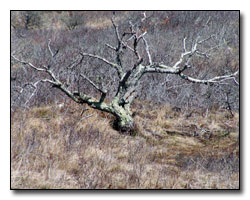|
The Wildlife:
Wildlife tends to relate to the weather in the same way that we do. When it is cold, wildlife tends to stay in a covered area to remain warm. In hot weather, wildlife tends to stay in a cool, shady area.
Their sense of smell is changed so they are more fearful of the danger that potentially lurks in the
outdoors. During rain storms, wildlife also tend to remain inactive. Once the storm is over or the
 temperature changes, much wildlife activity will be seen.
temperature changes, much wildlife activity will be seen.
The Time Of The Day And The Seasons:
There is pertinent information of the migration and hibernation habits of wildlife in many of the field guide books. Refer to the guides for the time of day that the wildlife are on the move. If you are visiting an area at 12:00 noon, don't expect to see many birds. It is very important to know when the best time of the day or season is to view certain wildlife or your efforts will be very disappointing. Study in advance and you will increase your odds of success.
The Wind:
Don't place yourself between the wildlife and the wind direction when trying to see wildlife. In other words, don't let the wind carry your scent toward wildlife since they will possibly move toward a safer area.
| 
